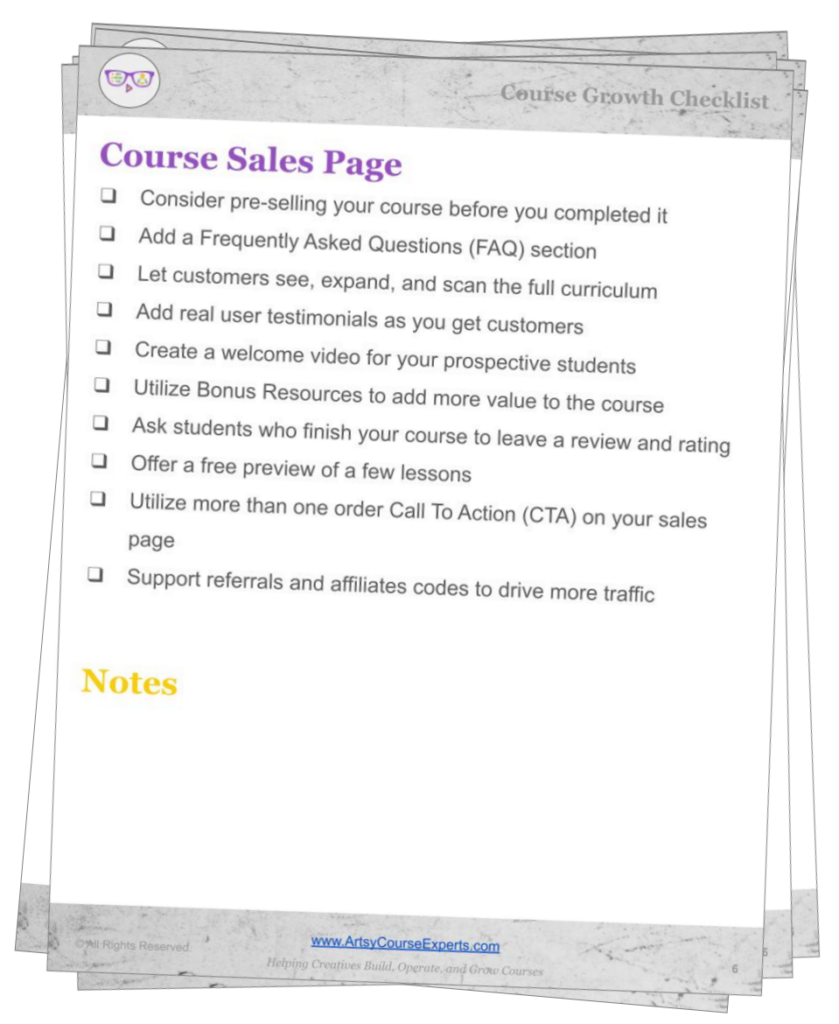What Are Course Surveys?
Course surveys are used to collect information from your customers so that you can learn about their goals and how they have benefited after taking your course.
You can also use surveys to collect important data so that you can create better sales pages and improve your course content and delivery.
In this article, we will review the different kinds of surveys and learn how to make the best use of them.
What Are The Different Kinds Of Course Surveys?
There are a few different types of surveys that you can use to grow your courses business.
A prospect survey can help you learn what your future students need, including specific language that describes their challenges.
A beginning of course survey can help you baseline your customers to see how they compare post training and help you understand the words in the sales page that motivated them to buy.
An end of course survey helps you to improve your course content, sell related services, and collect input for new courses.
A prior customer survey can help you re-engage with old customers so that you can sell more courses as well as learn about future offerings.
Beginning Of Course Surveys
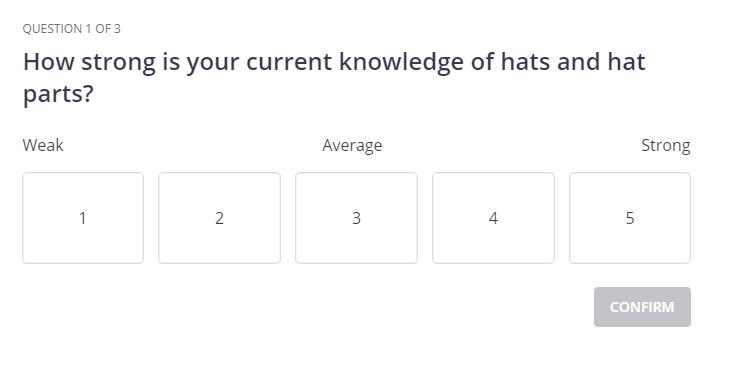
What Is A Beginning Of Course Survey?
A beginning of course survey is when you utilize a student survey somewhere at the beginning of your course to better understand their skills and goals.
The new student survey collects information such as:
- What situation is your student in
- What are your students specific challenges or goals
- What level skills do your students have before taking your course
- Are your students nervous or anxious about anything
Where To Place Your New Student Survey?
The new student survey should not be the first topic in your intro lesson, but it may be the 2nd or 3rd activity your student does after starting the course.
Ideally, you will want to have your introductory lesson explain the course and mention how students should take the new student survey to let you know what they expect to learn from this course.
Use Before And After Skill Scores
You may want to include a self-assessed skill-level rating before and after the course. The rating should use a scale like numbers from 0 to 10 or words from bad to great.
This allows the student to rate their skills before they start and after they have taken all the training, read the materials, and performed all the practice sessions.
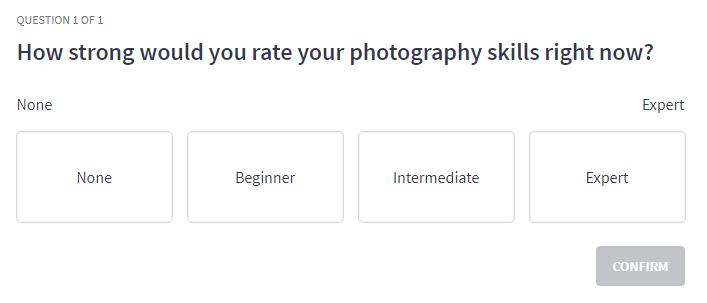
We recommend using a simple 0 to 5 score with helpful labels like 0 (None) to 5 (Best). You can also include labels for the middle and every interval if you choose.
Some Pre and Post Skill Example Questions:
- How skilled are you with Adobe Premiere?
- [ 0 (No Skills), 1 (Beginner), 2, 3 (Intermediate), 4, 5 (Expert) ]
- How comfortable are you writing spoken word poetry?
- [ Not at all, A little, Somewhat, Very comfortable ]
- What is your current CSS skill level?
- [ 0 None, 1, 2, 3, 4, 5 Average, 6, 7, 8, 9, 10 Experienced ]
New Student Surveys Can Help You Choose Your Content
New student surveys can help you improve your course content because students will tell you what they are looking to learn.
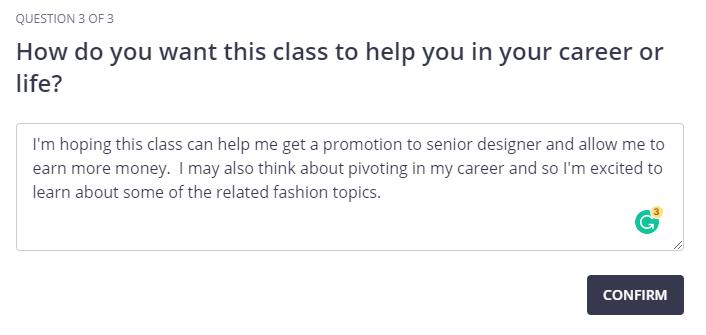
You can ask questions like:
- What do you hope to learn in this course?
- Why did you take this poetry writing course?
- What are some of the skills you are missing to perform your job well?
- Which specific sewing techniques are you hoping to learn in this course?
Get More Leads With Better Sales Words
Some of this information will help you update your sales page content.
For example, you may want to consider tweaking the course name now that you have data. Often, we didn’t understand the student struggles or competition well enough when Crafting the Perfect Course Name.
Use survey data to improve these parts of your sales page:
- Who is this course for
- What you will learn
- Teacher Overview
- Frequently Asked Questions
End Of Course Survey
What Is An End Of Course Survey
An End Of Course survey is a survey that is suggested to students after they have registered and taken almost all of their training including workbooks and class projects.
It’s one of the most valuable pieces of input given to course teachers before most students disappear forever.
Where To Place Your End Of Course Survey
This survey is usually located in the last module or section of the course. It’s often located in a module called something like Wrap Up, Final Section, or End Of Course.
End Of Design Course Structure Example:
- Module 6 : Advanced video editing with multiple layers
- Layering multiple videos and images
- Advanced transitioning across scenes
- Mixing multiple audio channels
- Final Module:
- Class Summary
- End Of Class Project
- Recommended Next Steps
- Survey: How did we do?
- Bonus Content:
- Free Green Screen Compositing eBook
Most teachers put any bonus content sections after the End Of Class, but that’s ok, as students usually hop around and check out all the content buckets.
Why Use An End Of Course Survey?
From an educational point of view, this may be the most important survey to collect from your students. This survey will help you understand if your students have learned their goals and if they are satisfied with your course.
Remember high customer satisfaction leads to more course purchases as well as positve reviews and referrals to other prospects.
End of course skill assessments examples:
- How would you rate your sewing skills after taking our training?
- [Beginner, Basic, Intermediate, Advanced, Expert]
- From a scale of 0 to 10, how would you rate your bass guitar skills after taking this course?
- [ 0, 1, 2, 3, 4, 5, 6, 7, 8, 9, 10 ]
- How confident are you with the skills to sell your woodwork products now?
- [Not at all, A little, Somewhat, A good amount, I know everything I need to know]
Ask For Data While Students Still Remember
While we expect most students to take the surveys during the class, some don’t for a variety of reasons. Nevertheless don’t wait too long after a student stops engaging with your course to prompt them to at least take the end of class survey.
You’ll want your students to not just remember the last thing (halo effect) about your course, but the various specific things about the course that were awesome or painful.
Here are some problems that students may not remember after a few weeks:
- What they hated about the teaching user interface
- How some of the videos played back with lag and jitter
- There were words that they didn’t understand and never learned
- How the camera angle didn’t let them see your hands very well
- How some of the PDFs had tiny fonts or was hard to read
Using Surveys To Improve Learning Materials
Surveys can help you understand if students are having problems with your study guides, samples, quizzes, and end of course projects.
Some course material problems could include:
- Not knowing a resource exists
- Reviewing supplemental content in the wrong order
- Not finding a particular resource
- Not being able to print out or view a resource
- Not being able to use or import a resource
Once you find out about specific problems, you can provide better instructions every time you refer to a resource.
“We are now going to open up the 3D house model. You can find it in the course in Section 2 Models in the Folder called Resources. You should be able to pause this video and right-click on Artsy-House-Model.3ds to save it, then File Open from your 3D program.”
Using Surveys To Help With Server Quality
Surveys can help you understand if your various web servers are frequently having issues delivering content or if your customer’s devices are struggling only during peak times of the day or week.
If you are getting lots of reports about video and download quality, you may have to upgrade your server hosting packages. There could also be optimizations that you can make with caching, DNS, load balancers, databases, storage, and other technical infrastructure items.
The survey responses may be able to help you detect a pattern such as US West coast students are seeing choppy or buffering video quality. You can then work with your technology partners to add capacity or a new CDN (Content Distribution Network) node to serve those locations.
Use End Of Course Surveys To Learn What To Revise
Students will let you know what content was hard to understand or how you used a word in the video that wasn’t previously explained. With this information, you will be able to improve your training slides, videos, and workbooks.
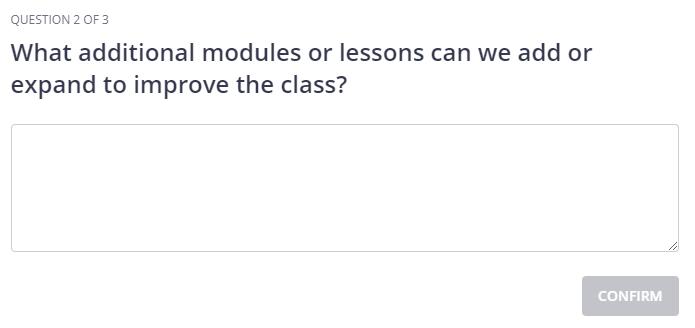
Here are some content issue questions you can ask:
- Was there anything you didn’t understand?
- Did you ever get lost going from lesson to lesson?
- Were any lesson examples too hard?
- Were there words or terms that were unfamiliar to you? Which ones?
Surveys Can Help Optimize Student Communications
Surveys can be used to know if students are having a hard time communicating with the teacher (you). They can reveal if the students are having a hard time sending you messages directly within the learning system or indirectly via chat rooms.
You can use this information to help steer communications to your preferred method of discussion and answers. For example, maybe you prefer them to send you a direct message as a student in a specific course instead of a support email that has limited context.
Communications feedback can help you steer frustrated students to FAQs or private support chats and emails. FAQs can be for students as well as for helping to sell courses by answering sales questions.
Some students may not even realize that you offer a student discussion room or external community, so getting feedback will help you educate your future students on all the different communication channels.
Get Information About The Teacher
You can use the end-of-course survey to collect information about the instructor. This may help you learn that you need to practice before teaching, move slower, enunciate your words, or speak slower.
Here are some sample questions:
- Any advice for the instructor?
- Can the teacher change anything to help students understand better?
- What could have the crafting teacher done differently?
- Did you like the teaching style?
- Did the teacher explain slides well?
- Was the instructor knowledgeable in every lesson?
Some of your feedback may be very good, so consider including elements when you write or update Your Teacher Bio.
Collect New Testimonials
You can use your end of course survey to ask students to leave you a quote or testimonial about the course.
Good testimonials can help you sell your course to new students. They show proof that other students like them found this course helpful. The testimonial also includes keywords that often resonate with other people who have the same educational needs.
Sample questions to collect testimonials:
- Would you like to leave me a quote that I can use on my website for other students?
- Would you mind sharing a testimonial for my website?
- Can you leave a brief review for our course?
Remember, if you don’t like the quote, you don’t have to use it. But if the testimonial rocks, then you should definitely log it and use it when you can. Also, some testimonials may talk about a challenge like not for beginners, but then talk about the total upside; while this may seem negative some customers might resonate with the honest caveats.
Use Surveys To Identify New Course Opportunities
You can use surveys to help you identify new courses or digital products to create. Customers will be telling you about their learning goals as well as where they are struggling.
Since you already have access to these exact customers, selling these new classes should be very easy since you can use your mailing lists, prior customer lists, and social channels.
General Survey Tips
Avoid Long Surveys
Don’t make surveys too long with so many questions or pages. When this happens respondents often do not complete the survey and give up in the middle.
Try to let the respondents know upfront how long the survey will take to fill out or at least how many pages or questions are in the survey.
If possible, try to use a progress bar or to show how many more questions remain like Question 3 of 5.
Include At Least One Freeform Edit Box
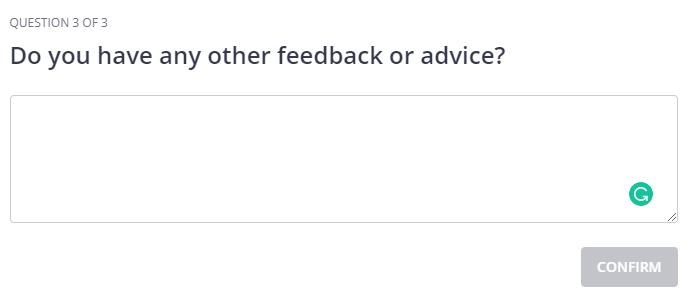
Many of your questions may include radio buttons with scores or list boxes with pre-made choices, but also try to have at least one open-ended question in your survey.
This allows the respondent to provide whatever unstructured feedback they want to tell you in the edit box. This also handles collecting any other types of business information that you didn’t explicitly ask for.
Open Ended Question Examples:
- What other feedback would you like to give us?
- Were there any other courss issues you would like to share?
- Do you have any other feedback for us?
- Any other feedback for the Learning Photoshop team?
Why You Should Store Your Survey Results
While emails with survey answers are nice, it’s great to build out a little database with all the survey responses.
A database is like a spreadsheet with every set of answers as a row of data fields. Every student response is a row. Every question is put in a column, and each student’s answer is in a specific cell. Databases will often let you export all the data into a CSV (Comma Delimited Values) or XLS (Excel) file.

You can use survey dates to compare how your current results compare with prior results. This way you can monitor your course as it evolves and your student customer service improves.
Offer A Gift When Students Take Your Survey
To motivate your students to take the survey and give you valuable feedback, you can try to offer a gift.
The gift doesn’t have to be a large sum or an expensive gift card. It could be something valuable to your students like a template (Sewing pattern) or a 15 min review of their course work (review the cake they designed).
If you can’t offer a gift, at least offer a very sincere thank you from creative teacher to artist and explain how their feedback helps you earn a living.
Inline vs Offsite Course Surveys
You may have the option to deliver the survey within the class management system like within thinkific.com or send the students outside of your class system like to the surveymonkey website.
It would be ideal to keep your student on your online property and offer the student survey right inside of your course system. This keeps your students engaged and doesn’t give them the opportunity to drift away after they complete the survey.
If your learning system doesn’t offer surveys, then feel free to leverage an online survey system like Survey Monkey, Google Forms, or Typeform. In some cases, you may even want to use your own website with a simple form like how WordPress users can use the plugin from WPForms.
Most Students Don’t Finish Online Courses
Unfortunately, most students do not finish online courses, so you may not get a large percent of your students to fill out the end of course survey.
However, you may be able to analyze how many sections and lessons your students are taking, and where they may start dropping off. Perhaps they learned what they needed or you lost them with advanced creative techniques.
Send Surveys To Recent Students To Get More Responses
If you see that a student has not completed and not logged into a course for over two weeks you may want to email your student.
While it’s possible that they are on vacation or going very slow, there is a good chance that they are in the middle or done taking your class.
Some learning systems let you see or export your student emails.
If your course technology system doesn’t give you access to student email addresses, you can also try to direct message the student with a link or instructions to access the end of course survey.
For Example:
Hi Aimee,
Looks like you got through most of the How To Sew Designer Blouses lessons. I hope you were able to improve your skills and make your first blouse.
It would be very helpful if you could take the survey at the end of the course so I can improve our courses and learn how to best support my students. Remember, you have lifetime access to this course.
The survey is located in the Wrap Up section and it’s just 3 easy questions. If you take the survey, I’ll personally review your end of project work and send you some notes and personalized tips.
Thank you so much!
Use Prospect Surveys With Your Brand Followers
If you have a blog or mailing list or even a social media following, you can also use a slightly different survey to ask your followers about your courses.
Here are some sample questions to ask your followers:
- What types of courses would you be interested in?
- Would you be interetseed in a free dance outfit mini course?
- We are thinking of making a new online sound editing class, which of the following are your biggest problems?
- Which kinds of sewing techniques do you prefer?
All of these answers will help you tweak your current courses or design new courses based on your target customer interest.
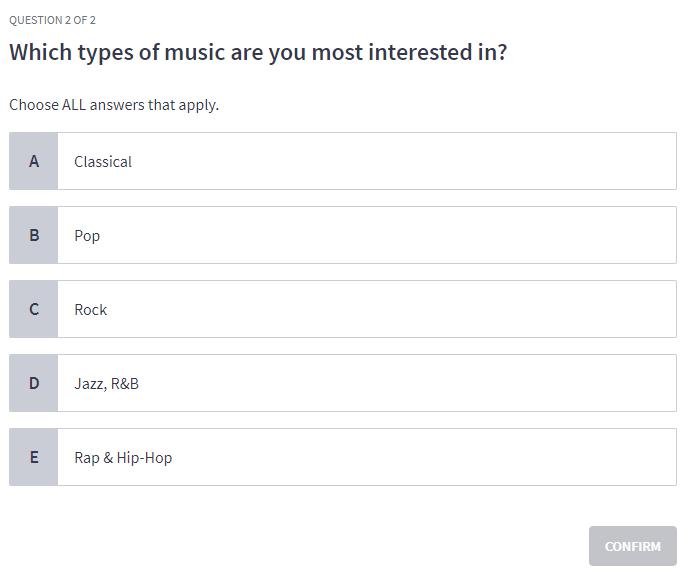
Using Surveys With Your Prior Customers
You can use surveys to engage with your old customers. They can be customers for another course or some other product that you sold like coaching, templates, ebooks.
While you may not e able to use your beginning of course or end of course survey, you can make a custom survey for your prior customers.
A survey to prior customers could include questions like:
- What challenges are you now experienceing?
- What design skills are you missing theses days?
- Which tools are you only using basic functionality instead of the more advanced powerful features?
- Which services could we offer to help you with your photography business?
Once you get your results you can email back customers letting them know about your course and maybe even offer them a coupon since they were a prior customer. If the results vary broadly, you can develop a template (or several) and then email a personalized response to each prior customer
Wrap Up – Use Course Surveys To Sell More Courses
In conclusion, surveys provide critical data for your creative online course business. They provide feedback to make your course content, materials, and operations better. They also provide excellent planning data for future courses or services.
Surveys are included in many Learning Management Systems (LMS). If you don’t have built-in surveys, you can easily link your course content to an online survey form.
In many cases, you may be surprised by what you learn and find out about your customers and courses.
If you don’t have a survey, add a quick task item to make one. Start with the beginning of course survey for better sales insight. You can probably make a quick 3 question survey in about 15 to 30 minutes. It may change your business forever…
Need some custom hand-holding to get started? Contact Us














